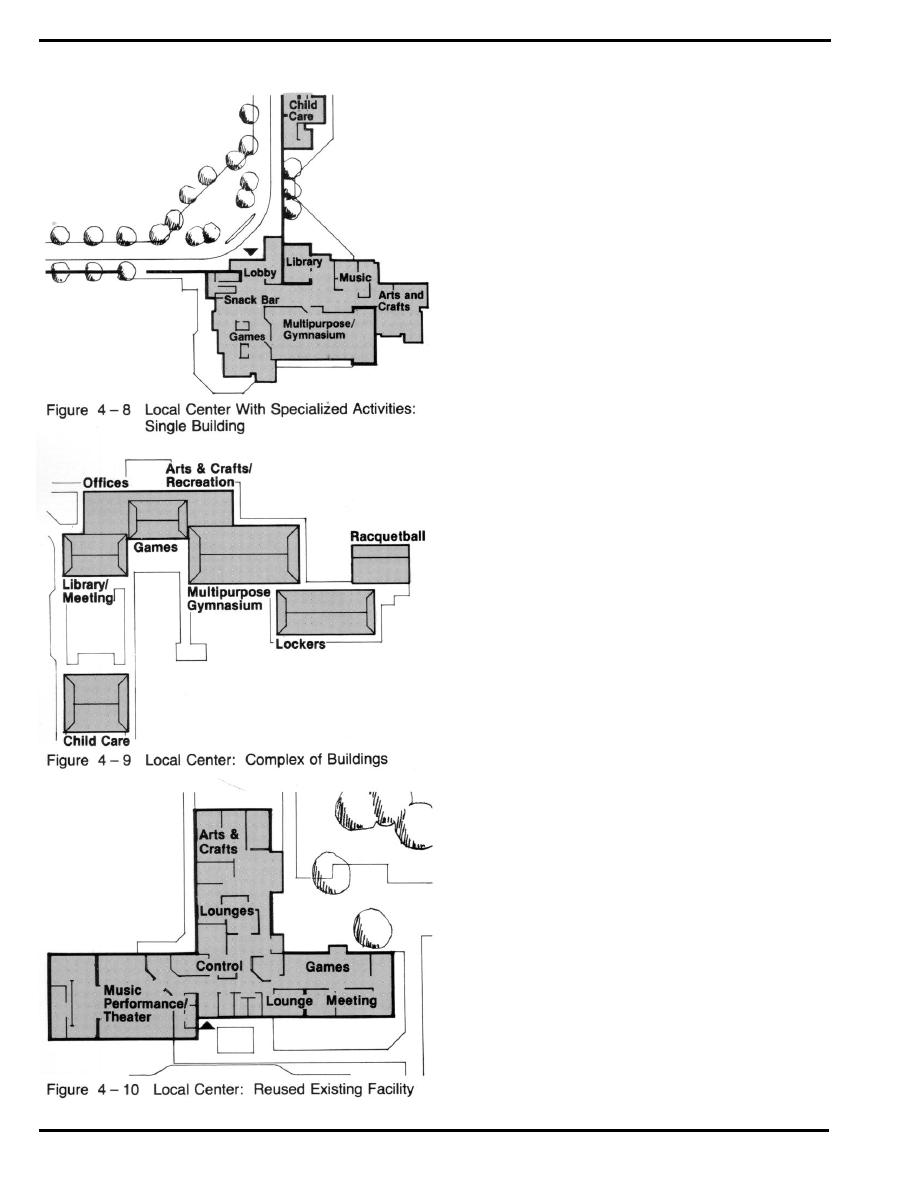
Chapter 4
The consolidation of these varied activities may take the
following forms:
(1) A Single Building. This approach is the most com-
mon for new construction. All activities are combined
within the same building. The nonspecialized drop-in,
social activities and control spaces are in the center of
the building and the more specialized activities surround
this core (illustrated in figure 4 - 8).
(2) A Complex of Connected Buildings. This model
may be used in new construction or when several
existing facilities are reused to produce a new Local
Center. Separate structures are either directly joined or
connected by covered walkways. Tropical climates partic-
ularly justify this latter approach. The recreation activi-
ties should be at the heart of this group of connected
buildings. The self-contained buildings permit easy oper-
ation of parts of the complex at different times, but may
reduce opportunities for staff consolidation and sharing
(see illustrative example, figure 4 - 9).
(3) A Reused Existing Facility. When a single
existing structure is being renovated into a Local Center,
compromises may be expected in program accommoda-
tion, openness, visibility, and consolidated staff opera-
tion. Programming of activities for the center may have to
be adjusted. Nonetheless, the principles of consolidation
should be applied in the design, to the extent feasible.
Specialized functions may have to be in distinctly sepa-
rate wings of the building (see figure 4 - 10).
Page 4-16 DG 1110-3-142


 Previous Page
Previous Page
